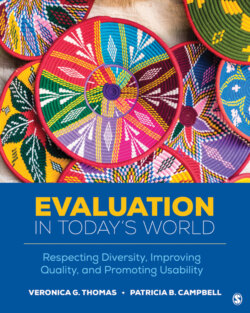Читать книгу Evaluation in Today’s World - Veronica G. Thomas - Страница 28
На сайте Литреса книга снята с продажи.
Bias Explicit Bias
ОглавлениеWe all have biases, and we need to pay attention to the biases people have as individuals and as evaluators. Bias has been defined as a particular tendency or inclination, especially one that prevents reasonable, knowledgeable, thoughtful consideration of a question (Harmon, 1973). While bias can be intentional, it often is not. Bias can grow out of one’s assumptions—the things one accepts as true without questioning. It can be based on the ways the evaluator thinks things are (or should be). Biases can be explicit—that is, one knows one has a particular bias. For example, we might be biased in favor of people who like Ben & Jerry’s ice cream and biased against those who like Häagen-Dazs ice cream. When a bias is explicit, one can accept it or try to counteract it.
Evaluators can, and most often do, have explicit biases. Our biases may be related to methods—for example, being biased against use of online surveys or biased in favor of programs that include a component for participant reflection. Evaluators may also be biased in terms of what they think participants in a program need to be successful. If evaluators have explicit biases that can impact their work, they need to let others know their biases exist and to have others check to see if those biases are impacting the work. It is important for evaluators to remember that, as Hannum (2018, para. 4) points out,
there is bias and error in all information. Understanding how information can be biased is helpful. Equally helpful is understanding the roots of bias within ourselves. We often think of other people deceiving us, but the best place to begin to whittle away nonsense is within ourselves. The more we know about how to gather, interpret, and use information, the less likely we are to get caught up in assumptions, bias, and outright deception.
The following activity provides an opportunity for readers to reflect on and discuss their own explicit biases.
